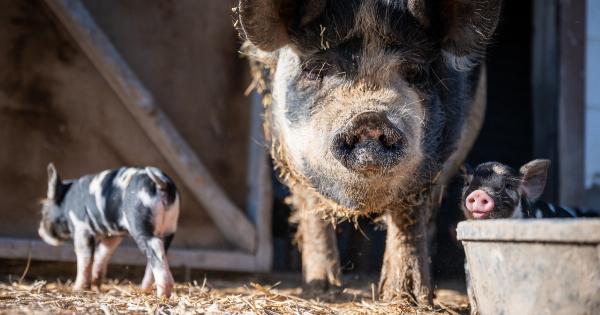Introducing new foods to your baby’s diet is an exciting and important milestone.
As your little one grows and develops, their nutritional needs change, and it becomes necessary to introduce a wider variety of foods to support their growth and development. This transition from purees to solids can be a gradual process, allowing your baby to explore different tastes and textures while ensuring they receive all the necessary nutrients.
1. When to start introducing solid foods
The American Academy of Pediatrics suggests that babies should be exclusively breastfed or formula-fed for the first six months of their lives. After this period, most babies are ready to start experimenting with solid foods.
However, it’s crucial to consult with your pediatrician to determine when your baby is developmentally ready to begin this transition. Some signs that your baby is ready for solid foods include:.
- Ability to sit with minimal support.
- Loss of the tongue-thrust reflex (pushing food out of their mouth with their tongue).
- Showing an interest in what you’re eating.
- Ability to coordinate their eyes, hands, and mouth to pick up and hold food.
2. Starting with purees
Purees are an excellent starting point when introducing solid foods to your baby. They are easy to swallow, digest, and provide essential nutrients.
You can either purchase packaged baby food or make your own purees at home using a blender or food processor. When starting with purees, it’s recommended to introduce one new food at a time, allowing your baby to get used to different flavors and identify any potential allergies or intolerances.
3. Introducing single-ingredient foods
When starting with solid foods, it’s best to begin with single-ingredient foods. This makes it easier to identify any reactions or allergies your baby may have to specific foods. Some common single-ingredient foods to start with include:.
- Avocado: Rich in healthy fats and essential nutrients.
- Carrots: A good source of beta-carotene and vitamin A.
- Bananas: High in potassium and fiber.
- Sweet potatoes: Packed with vitamins and minerals.
Start with a small amount of puree and gradually increase the quantity as your baby becomes more comfortable with eating. Remember to always monitor your baby for any signs of food allergies, such as rashes, vomiting, or diarrhea.
4. Progressing to mashed and minced textures
Once your baby has successfully transitioned to purees and has been introduced to a variety of single-ingredient foods, you can start gradually introducing mashed and minced textures.
This will help your baby develop their ability to chew and swallow more solid foods. You can achieve these textures by mashing cooked fruits, vegetables, or combining them with grains like rice or oats.
As your baby becomes more adept at eating mashed and minced foods, you can also introduce small soft pieces of cooked fruits and vegetables. This allows them to practice picking up food and feeding themselves, while also enhancing their motor skills.
5. Offering a variety of flavors and textures
While introducing new foods to your baby, it’s essential to provide a diverse range of flavors and textures. This will help expand their palate and ensure they receive a broad spectrum of nutrients.
Incorporating foods with different tastes, colors, and textures will make mealtimes more exciting and enjoyable for your little one.
Try introducing various fruits, vegetables, grains, and proteins like cooked and minced chicken or tofu. By exposing your baby to different flavors from an early age, you can help prevent them from becoming picky eaters later in life.
6. Introducing allergenic foods
Contrary to popular belief, research suggests that introducing allergenic foods early on may reduce the risk of allergies.
According to the National Institute of Allergy and Infectious Diseases, it is safe to introduce common allergenic foods such as peanuts, eggs, dairy, soy, and wheat to babies after the age of 4-6 months. However, it’s crucial to consult with your pediatrician before introducing these allergenic foods, especially if there is a family history of allergies.
When introducing allergenic foods, start with a small amount and watch out for any adverse reactions. It’s recommended to introduce one new allergenic food at a time, waiting a couple of days before introducing another.
This allows you to identify any potential allergies and seek appropriate medical advice if needed.
7. Creating a mealtime routine
Establishing a mealtime routine is beneficial for both you and your baby. It helps create a predictable and comforting environment for your little one and encourages healthy eating habits. Some tips for creating a mealtime routine include:.
- Designate specific times for meals and snacks.
- Create a calm and distraction-free environment for meals.
- Sit together as a family and enjoy meals together.
- Offer a variety of foods at each meal, including those your baby may have already tried.
- Allow your baby to self-feed and explore food textures.
8. Avoiding common choking hazards
As you introduce solid foods to your baby, it’s crucial to be aware of common choking hazards to ensure their safety. Some foods to avoid or modify include:.
- Hard foods like whole grapes, nuts, or popcorn.
- Small, round foods like berries or cherries.
- Chunks of meat or large pieces of raw fruits and vegetables.
- Sticky foods like peanut butter or marshmallows.
To make foods safer, always cook them until they are soft and easy to chew. Cut fruits and vegetables into small, manageable pieces and avoid giving your baby foods that could easily break apart into large chunks.
9. Patience and persistence
Introducing new foods to your baby’s diet can sometimes be met with resistance or refusal. It’s crucial to remain patient and persistent during this phase. Research suggests that it can take ten or more tries for a baby to accept a new food.
Be consistent in offering a variety of foods, and don’t be discouraged if your baby initially rejects them. Their taste preferences will evolve over time.
10. Consulting a pediatrician
Your pediatrician is an excellent resource when it comes to introducing new foods to your baby. They can provide personalized advice based on your baby’s unique nutritional needs and any specific concerns you may have.
Don’t hesitate to reach out to them if you have any questions or need guidance throughout this process.
Conclusion
Introducing new foods to your baby’s diet is an exciting journey that supports their growth and development.
By gradually transitioning from purees to solids, offering a variety of flavors and textures, and considering allergenic foods, you can ensure your baby receives a diverse and nutritious diet. Remember to be patient, seek guidance from your pediatrician, and most importantly, enjoy this remarkable stage with your little one.





























